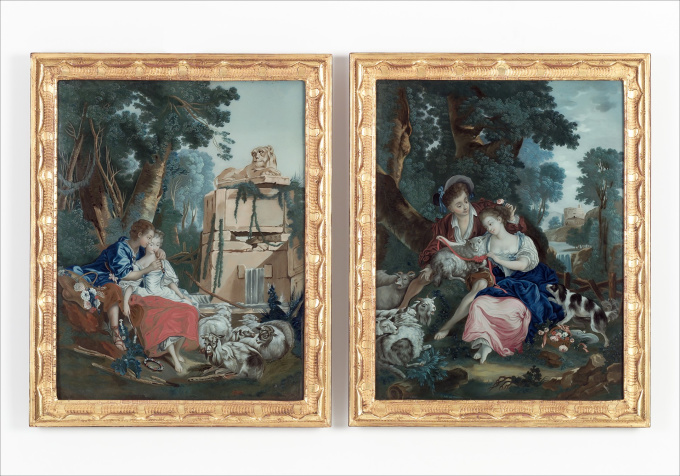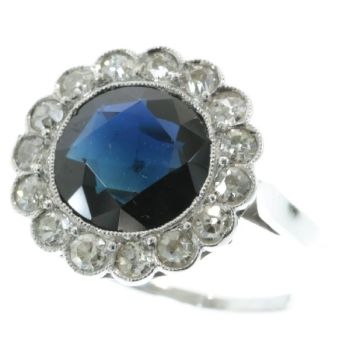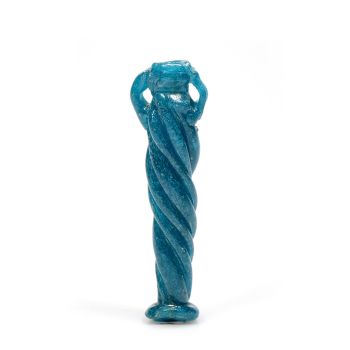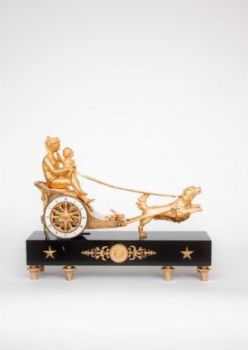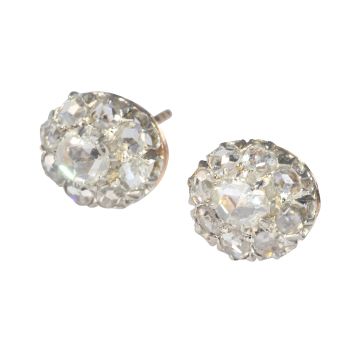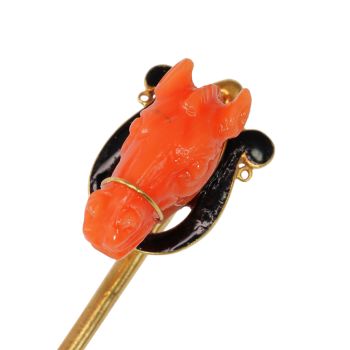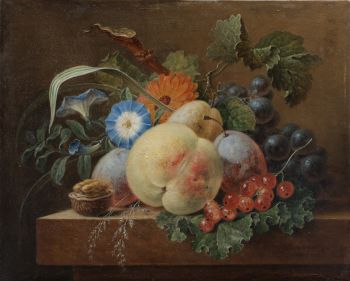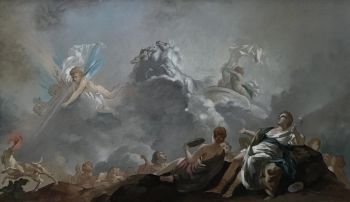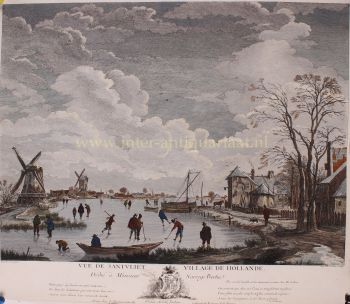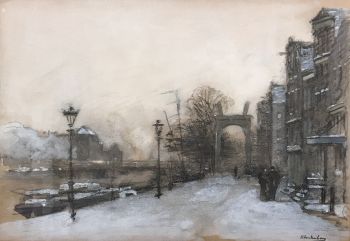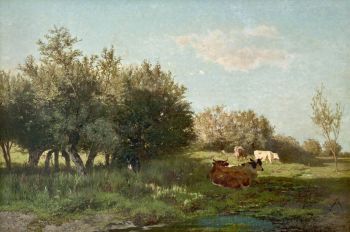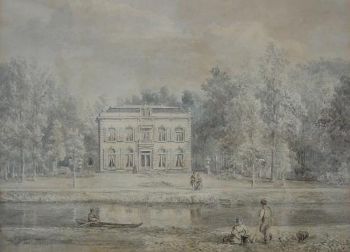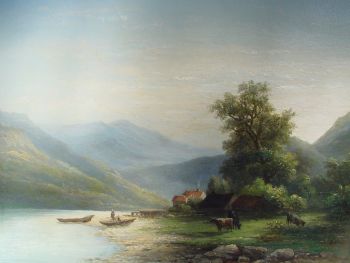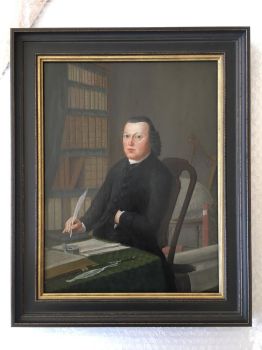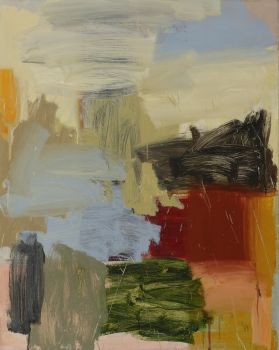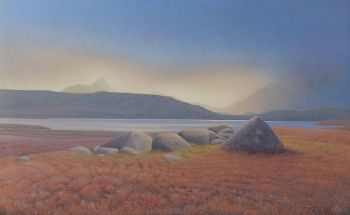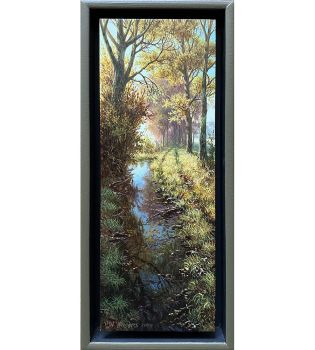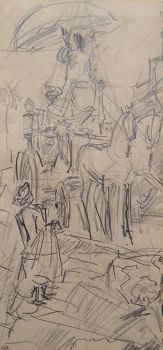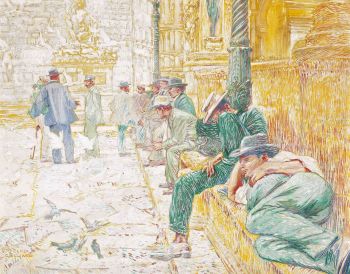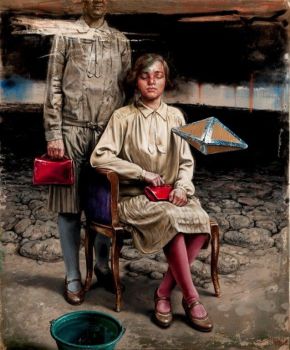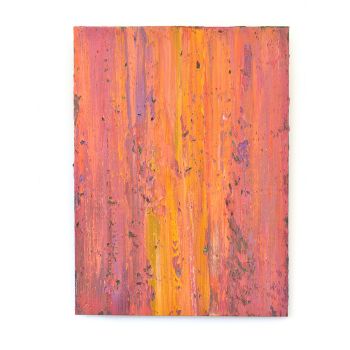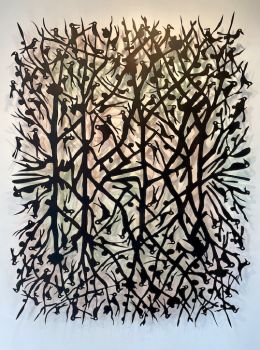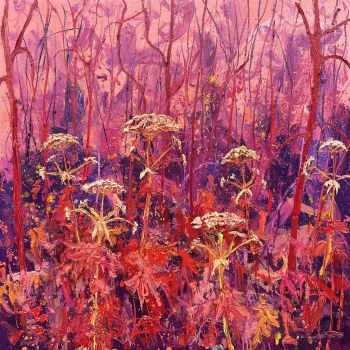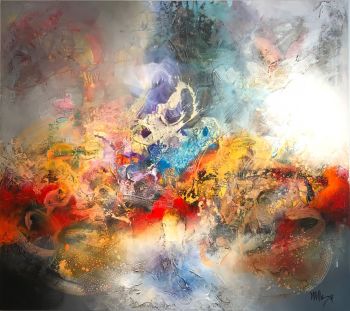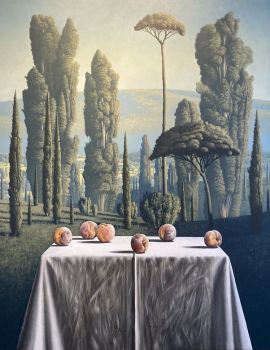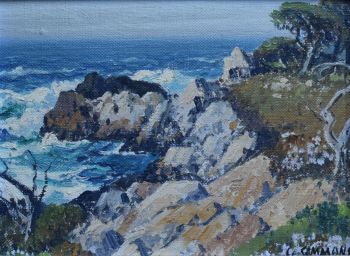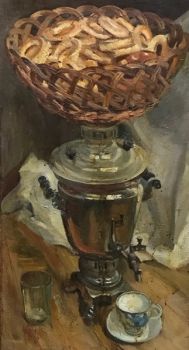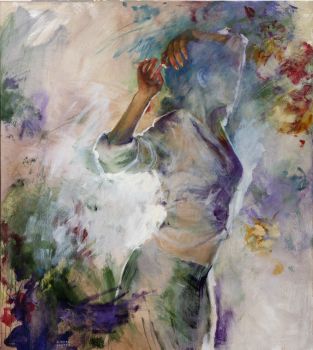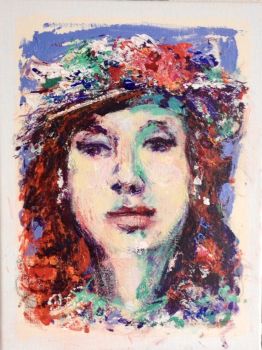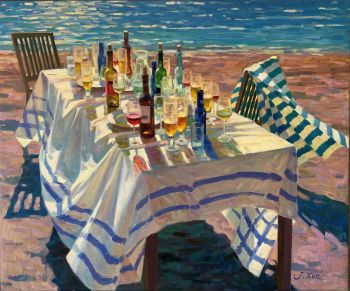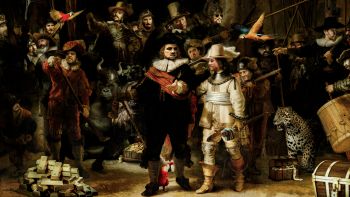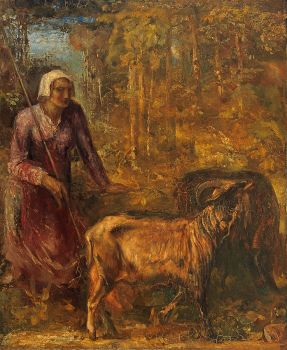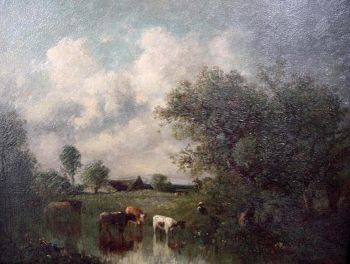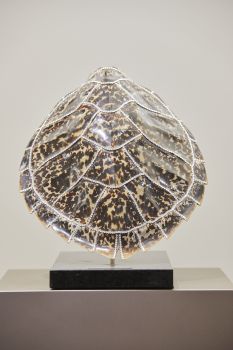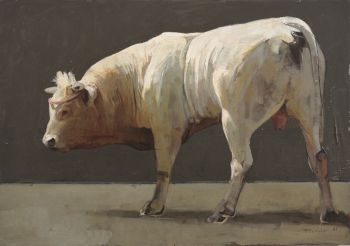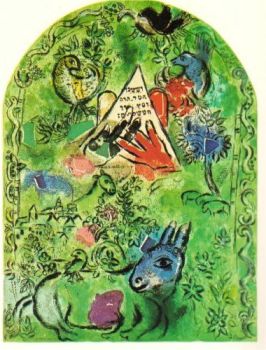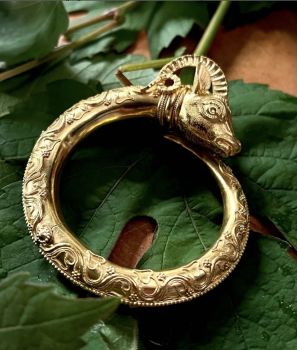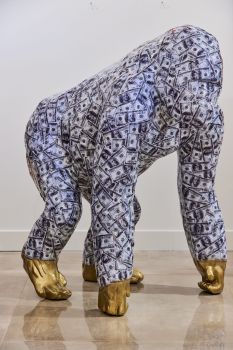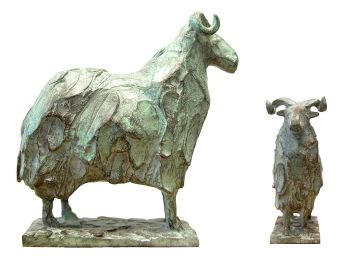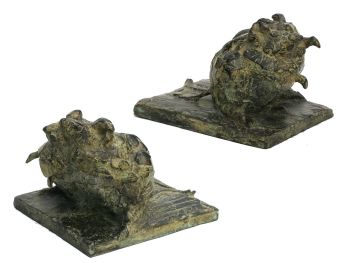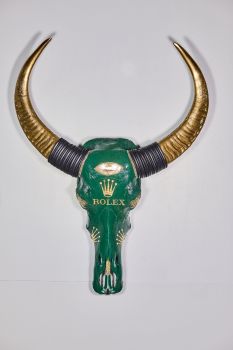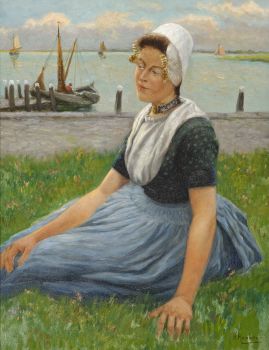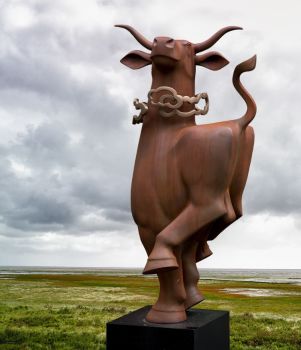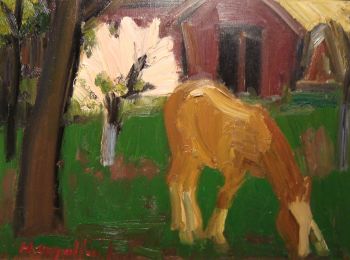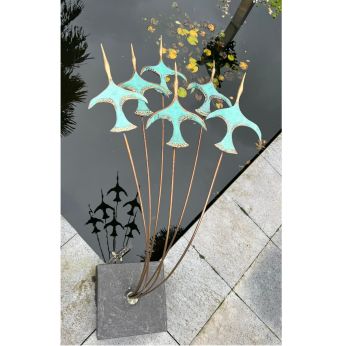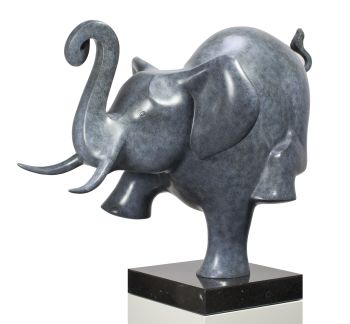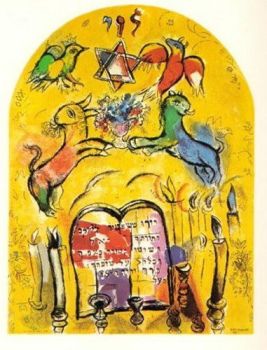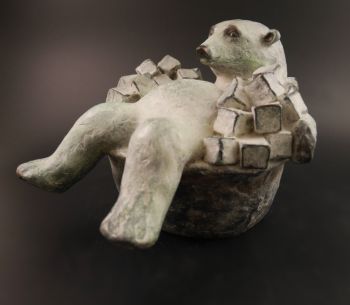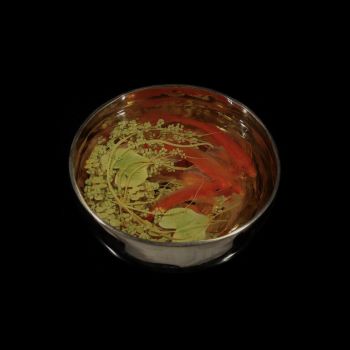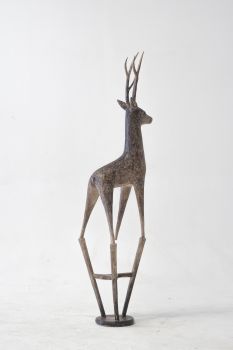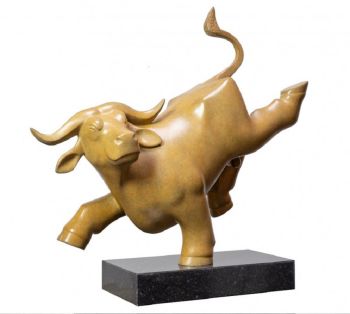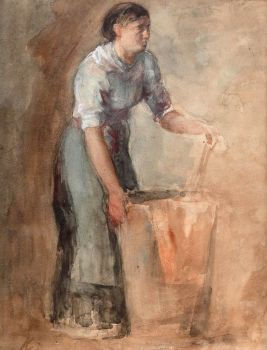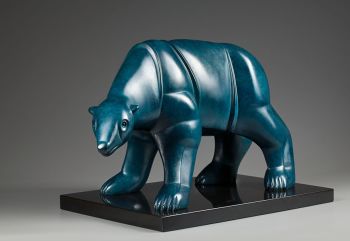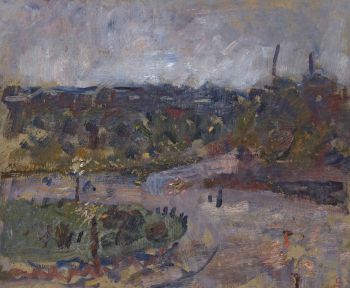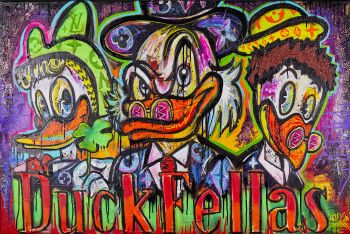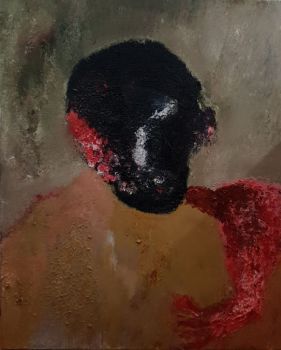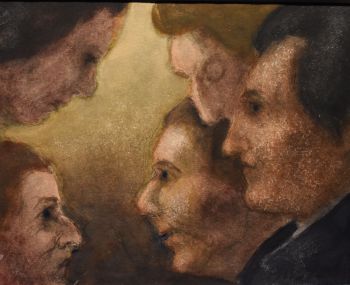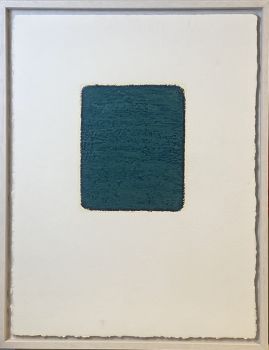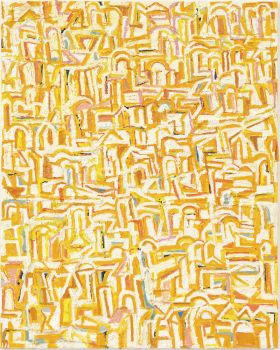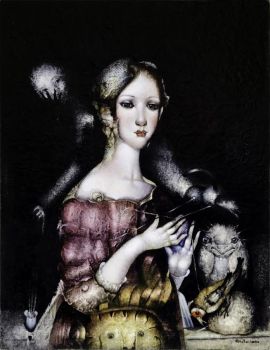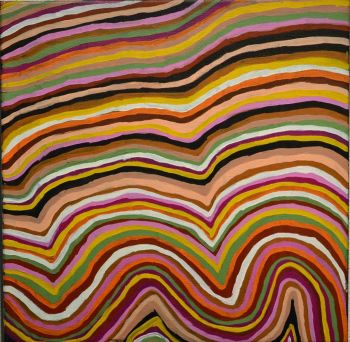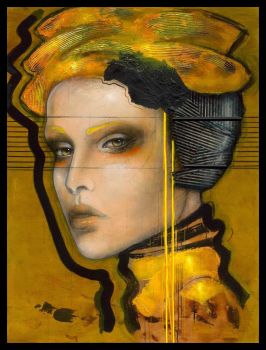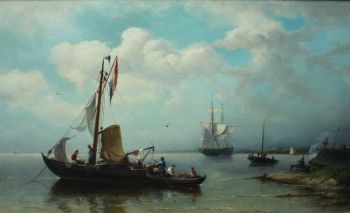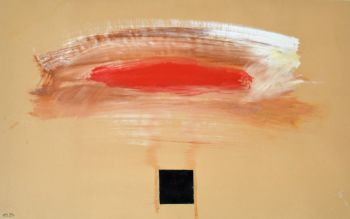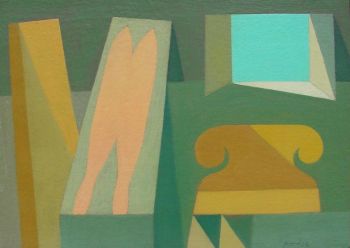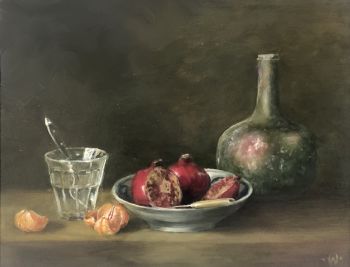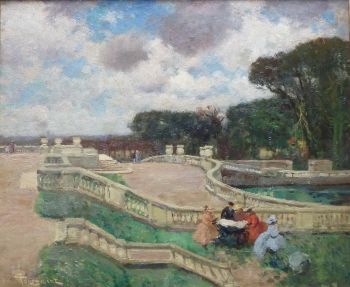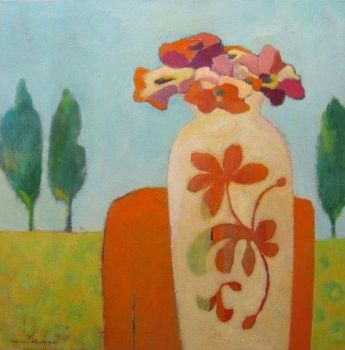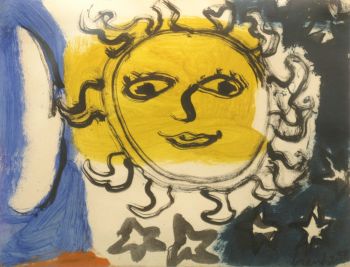Two Chinese Reverse Mirror Paintings, after paintings by François Boucher 1774 - 1776
Artista Desconocido
VidrioEspejoPintura
52 ⨯ 41 cm
ConditionExcellent
Actualmente no disponible a través de Gallerease
- Sobre la obra de arteReverse mirror paintings are very difficult to manufacture, because the image has to be applied in an unusual order. The details in the foreground are painted first and the background is added as the last step. Many of these reverse mirror paintings were made after illustrations and engravings of Boucher.
L’Agréable Leçon (the entertaining lesson)
In a landscape of trees and a picturesque fountain we see a pair of herds. Snugged up to the boy, the girl plays on his oat. Her favorite sheep is tied to a ribbon that she holds and some more sheep lie at her feet. The scene is completed with a flower basket.
The original is an oval shaped painting of Boucher of 1748 that was presented at the Paris Salon of the same year with exhibit number 19: ‘Un tableau ovale représentant un berger, qui montre à jouer de la flûte a sa bergère’. (an oval scene representing a shepherd who learns his shepherdess to play the flute).
On the Salon of 1750 it was part of item 24: ‘Quatre pastorale de forme ovale […] et la quatrième un berger qui montre à jouer de la flûte à sa bergère sous le même numéro.’
R. Gaillard made a rectangular engraving of the painting, dedicated to the count de Coigny, and gave it the title ‘L’Agréable Leçon’.
In 1752 this pastoral scene was shaped into a sculpture by an anonymous modelmaker from Sèvres under the title ‘le Flûteur’.
Le Mouton Favori
In a landscape with woods and a ruin in the background a pair of shepherds is sitting. The boy has a sheep on his lap and holds a rose over the girl’s head. The girl is ties a ribbon round the neck of a sheep. In the foreground some sheep are lying by the shepherds feet. On the right a basket with flowers and a dog.
The original of this painting has disappeared, but a rectangular engraving by R. Gaillard titled ‘Le Mouton Favori’ remained. - Sobre el artista
Puede suceder que un artista o creador sea desconocido.
Algunas obras no deben determinarse por quién está hecho o por (un grupo de) artesanos. Algunos ejemplos son estatuas de la Antigüedad, muebles, espejos o firmas que no son claras o legibles, pero también algunas obras no están firmadas en absoluto.
También puedes encontrar la siguiente descripción:
•"Atribuido a …." En su opinión, probablemente una obra del artista, al menos en parte.
•“Estudio de….” o “Taller de” En su opinión, una obra ejecutada en el estudio o taller del artista, posiblemente bajo su supervisión
•“Círculo de…” En su opinión, una obra del período del artista que muestra su influencia, estrechamente asociado con el artista pero no necesariamente su alumno.
•"Estilo de …." o “Seguidor de…”. En su opinión, una obra ejecutada al estilo del artista pero no necesariamente por un alumno; puede ser contemporáneo o casi contemporáneo
•"Manera de …." En su opinión una obra al estilo del artista pero de fecha posterior
•"Después …." En su opinión, una copia (de cualquier fecha) de una obra del artista
•“Firmado…”, “Fechado…” o “Inscrito” En su opinión, la obra ha sido firmada/fechada/inscrita por el artista. La adición de un signo de interrogación indica un elemento de duda.
•“Con firma…”, “Con fecha…”, “Con inscripción…” o “Lleva firma/fecha/inscripción” en su opinión la firma/fecha/inscripción ha sido añadida por alguien que no es el artista
Artwork details
Related artworks
- 1 - 4 / 12
Eduard Charlemont
‘Allegories of Africa and America’1872
Precio a consultarZebregs & Röell - Fine Art - Antiques
Johannes Christiaan Karel Klinkenberg
Cityscape Amsterdam1875 - 1925
Precio a consultarGalerie Gabriëls
Gerard Bilders
The 'Uiterwaarden' at Oosterbeek (flood plains)1861
Precio a consultarStudio 2000 Art Gallery
Artista Desconocido
Een Gotische zuidelijke Nederlanden wandklok1580 - 1590
Precio a consultarNico van den Assem restauratie
Corstiaan Hendrikus de Swart
Mountain landscape with Lake1838 - 1900
Precio a consultarKunsthandel Pygmalion
Artista Desconocido
A Surinam-themed Amsterdam long-case clock1746 - 1756
Precio a consultarZebregs & Röell - Fine Art - Antiques
 curada por
curada porGallerease Magazine
1 - 4 / 24Dutch School
Llegada de un holandés de las Indias Orientales a Table Bay18th century
Precio a consultarZebregs & Röell - Fine Art - Antiques
Rene Rietmeyer
"Portrait of Alessandra" 20182018
Precio a consultarEuropean Cultural Centre Collection
1 - 4 / 24- 1 - 4 / 24
- 1 - 4 / 24

